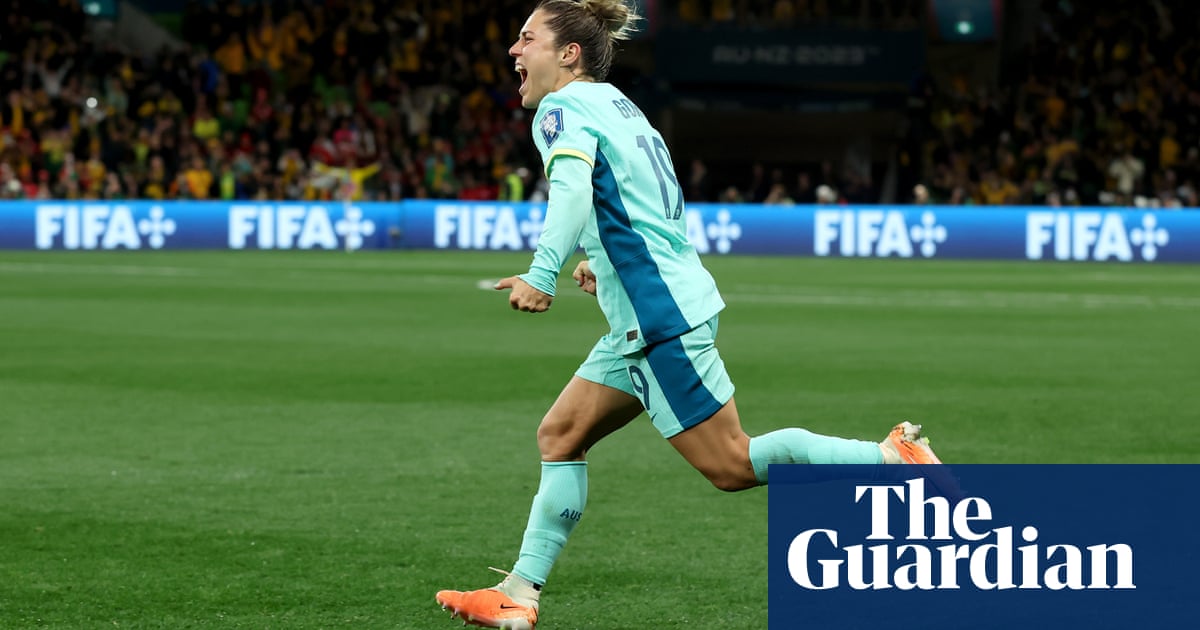
A commentator’s suggestion during Australia’s opening Women’s World Cup match that “motherhood” had “not blunted” midfielder Katrina Gorry’s “competitive instincts” drew widespread criticism.
Gorry, who later said she did not take the comment personally, is far from the first mother to come back to the highest levels of elite sport. Her post-pregnancy return is emblematic of a growing trend among female athletes, who overcome remarkable physical and psychological changes to continue their professional careers.
At least half a dozen other players at the World Cup are mothers: Crystal Dunn, Julie Ertz and Alex Morgan on the US team; Amel Majri of France; Germany’s Melanie Leupolz; and Jamaicans Konya Plummer and Cheyna Matthews, who has three sons.
“What we’re seeing is more and more athletes are wanting to not only train during pregnancy, but stay in their sport and continue to compete postpartum,” says Associate Prof Melanie Hayman of Central Queensland University, whose research focuses on exercise in pregnancy. She has worked with athletes who continue to train, with modifications, until the day they give birth.
Six of the top 10 finishers at the New York marathon last November were mothers, including the Australian Jessica Stenson, who had a baby in late 2019 and was the marathon gold medallist at the 2022 Birmingham Commonwealth Games. Last December, in Valencia, mother-of-two Sinead Diver, then 45, set a new Australian record for fastest female marathon time.
In tennis, Elina Svitolina returned to the tour six months after giving birth last October, making it to the quarter-finals of the French Open and the semi-finals of Wimbledon. In earlier decades, Evonne Goolagong Cawley won Wimbledon in 1980 after having a daughter, while Margaret Court and Kim Clijsters have also won grand slam titles after becoming mothers.
Pregnancy itself is a remarkable feat of endurance: in 2019, scientists found that energy use during the 280-day long process peaks at 2.2 times basal metabolic rate (BMR). This was close to the sustainable limit of human endurance, which tops out at 2.5 times BMR in studies of ultra-marathoners.
“To think about pregnancy in the same terms that we think about Tour de France cyclists and triathletes makes you realise how incredibly demanding pregnancy is on the body,” one of the study’s authors, Associate Prof Herman Pontzer, said at the time.
Despite the growing acceptance that starting a family doesn’t mean the end of a professional sports career, experts say there is limited guidance for elite athletes both during pregnancy and in the return to sport postpartum.
“It’s really hard, because of the lack of research, to [provide] any definite evidence about what women should and shouldn’t do,” says Prof Wendy Brown, of the University of Queensland and Bond University.
“We just haven’t invested in that particular space,” says Associate Prof Clare Minahan, a sports scientist at Griffith University who specialises in female athlete performance.
In the early months of pregnancy, many elite athletes will continue playing with no significant alterations to their training plan, Minahan says. Serena Williams famously won the Australian Open in 2017 while eight weeks pregnant. The current intensity recommendation for athletes is that they don’t exceed 90% of their heart rate maximum while training.
The body changes, sport stays the same
Pregnancy elevates levels of hormones such as relaxin, which loosens ligaments and joints, potentially increasing the risk of injury. “Relaxin levels peak between 12 and 14 weeks gestation and can still be present for several months after birth,” Hayman says. Labour and childbirth can also permanently change the structure of the pelvic girdle, possibly affecting biomechanics.
Athletes often return to sport within the postpartum recovery period, which generally lasts around six weeks. “Whilst the abdominal muscles, pelvic floor and hormonal levels start to recover, repair and return to their pre-pregnancy state, they may take several weeks to several months to recover,” Hayman says.
Female athletes must also balance increased nutritional requirements postpartum with the transition to their pre-pregnancy athleticism, says Dr Alison Hill, a senior lecturer in nutrition at the University of South Australia. Breastfeeding women require an additional 2,000kJ a day compared with pre-pregnancy, she says.
“If you’ve then returned to sport, you need more on top of that.”
Hayman says: “There is a 3%-10% reduction in bone mineral density during breastfeeding, due to the high amounts of maternal calcium transfer in breastmilk. It is theorised that this may increase risk of injury, including stress fractures which are the most common cause of injury among athletes who return to sport within six weeks of birth.”
Belinda Beck, a professor of exercise science at Griffith University, says most athletes – though swimmers and cyclists are notable exceptions – tend to have higher than average bone mineral density “just by virtue of the fact they are athletic and they have been loading their skeletons”.
“Even though there might be a temporary reduction in bone mineral density while someone is creating another skeleton and providing breast milk, ultimately it doesn’t have a [permanent] negative effect on their bone.”
Other changes may even confer a competitive advantage: cardiac output and blood volume both increase during pregnancy, theoretically improving aerobic performance, at least temporarily.
Brown says these changes may be beneficial for women in sports where oxygen-carrying capacity is important, such as long-distance running.
“We know of athletes who have won gold medals very soon after pregnancy.”
But these adaptations are likely to be offset by other factors. “We know that sleep is the number one process for recovery,” Minahan says, noting that severely limited sleep after giving birth needs to be factored into athletes’ training programs.
‘Fulfilled in other ways’
Beyond the physical changes, Hayman suggests that the demands of pregnancy may help athletes develop mental resilience and coping strategies that can contribute to improved performance.
“Being a mother can bring new perspectives to an athlete’s life, and … can also help athletes to develop a more balanced perspective on sport performance and also life in general,” she says. “That’s something that I hear a lot from those athletes.”
Gorry has previously told the Guardian that motherhood seemed to have “refreshed my whole body”, while the marathoner Jessica Stenson – who clocked a personal best in her first postpartum marathon – has said: “Since becoming a mum … I feel less pressure as an athlete because I feel complete and fulfilled in other ways.”
But the expectation for women to “bounce back” after having a baby can lead to disproportionate scrutiny on athletes. In a Canadian study, one elite athlete expressed frustration at the expectation for women to return to play within six months, saying: “We’re not superhumans. We are humans.”
Minahan says: “Coming back postpartum, an athlete really needs to be realistic about the progression they’re going to make.
“There’s no reason why they can’t get back to their best.”
The decision to have children, she says, is “definitely not something that all athletes need to put off [until] after their career”.












